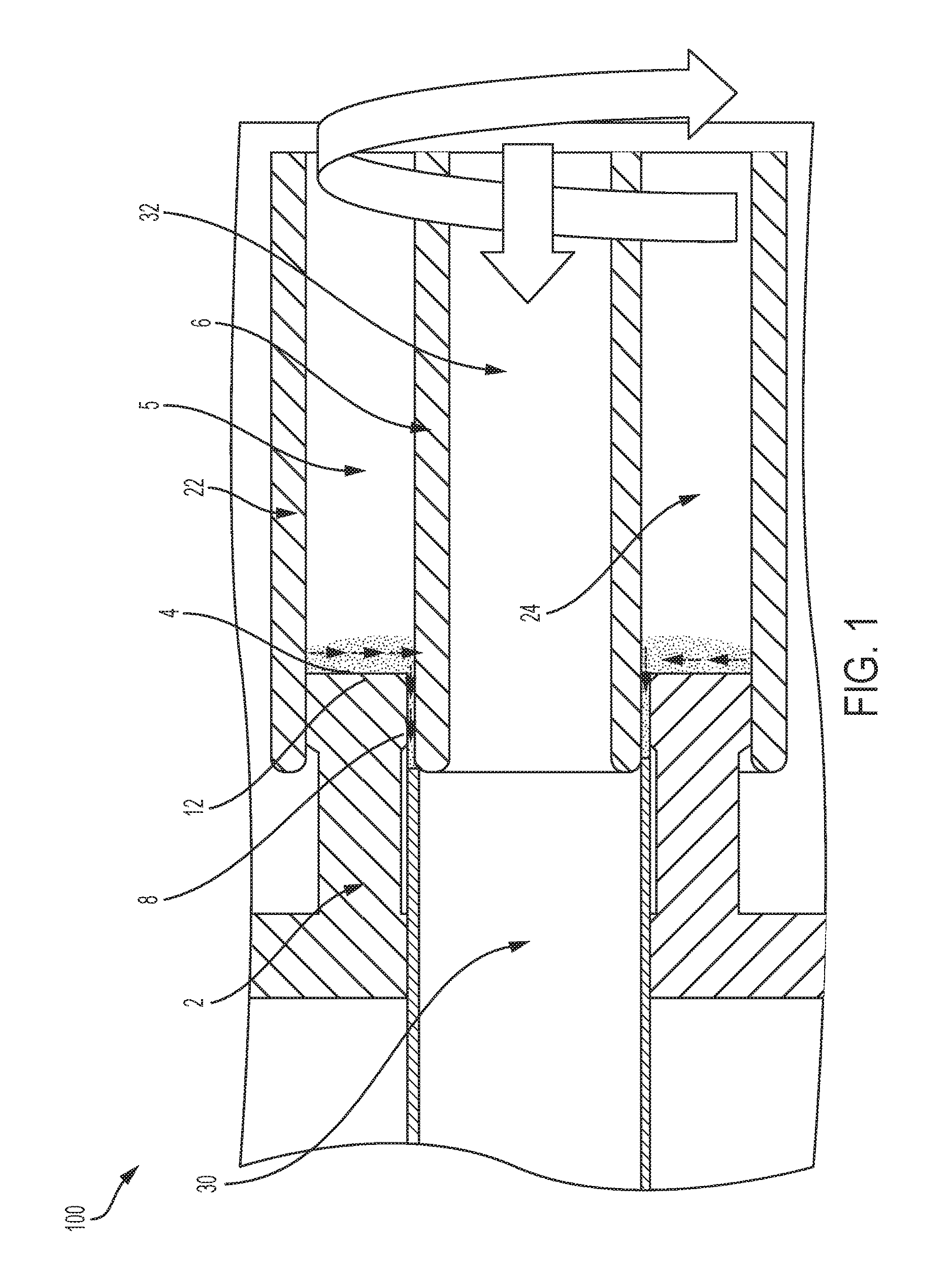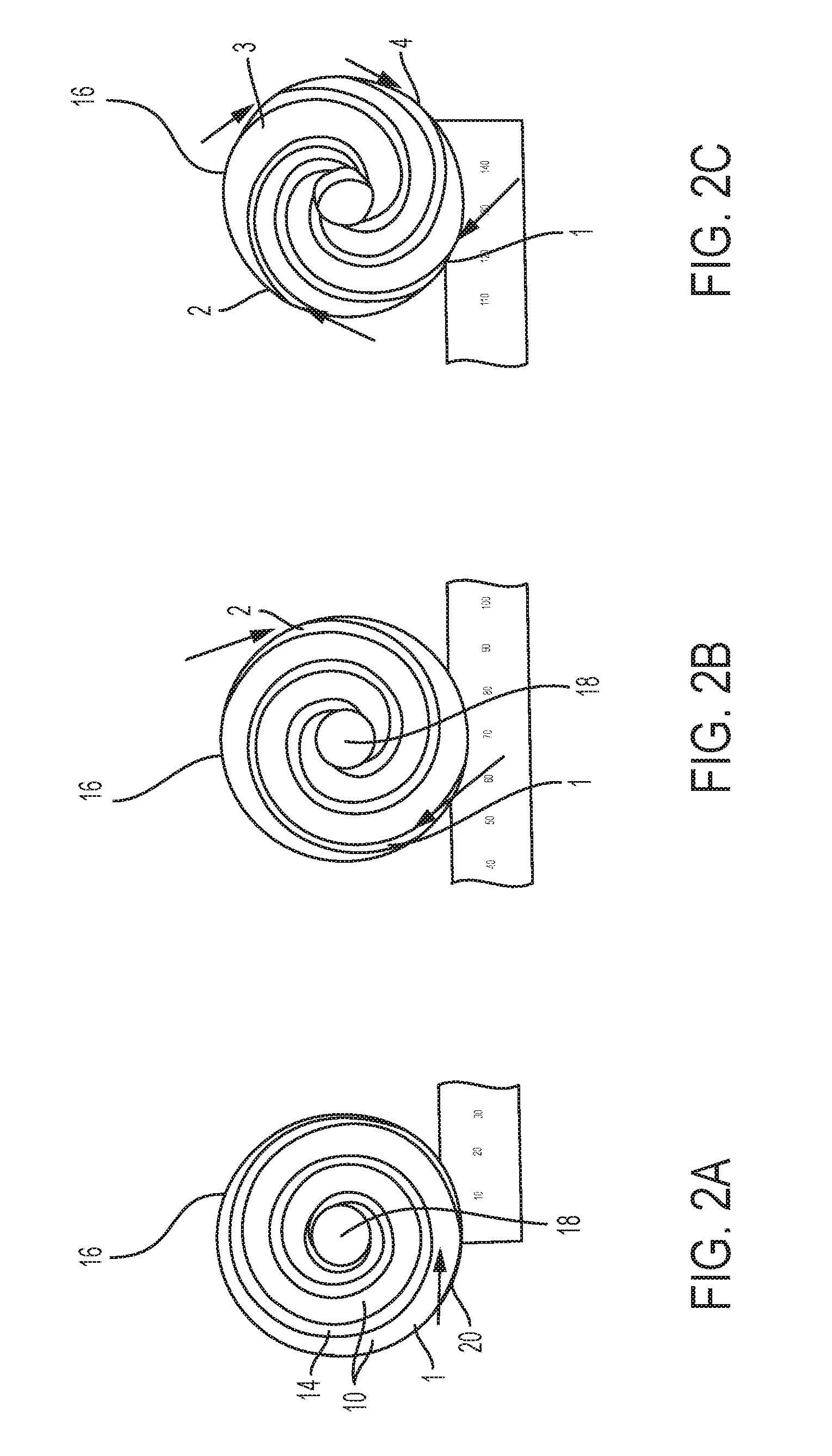System and process for formation of extrusion products
a technology of extrusion products and process, applied in the field of metal product production, can solve the problems of increasing cost, affecting the quality of extrusion products,
- Summary
- Abstract
- Description
- Claims
- Application Information
AI Technical Summary
Benefits of technology
Problems solved by technology
Method used
Image
Examples
example 1
[0025]In one set of experiments, a direct extrusion assembly similar to that shown in FIG. 1 was used to extrude an exemplary magnesium alloy (ZK60A-T5) to produce exemplary tubes by direct extrusion. The extrusion die 2 included an inner diameter (ID) of 50.8 mm that determined the outer diameter (OD) of the resulting extrusion product 30. An integrated container 22 and mandrel 26 assembly was used. In the exemplary embodiment, container 22 included an ID of 88.9 mm and the mandrel 26 included an OD of 47.8 mm. The difference in the radius between the ID of the extrusion die 2 and OD of the mandrel 26 was 1.52 mm, which determined the wall thickness of the extrusion product 30. Hollow billets 5 of the ZK60 alloy were machined from a round bar stock, and then extruded to form tubes 30 with an OD of 88.8 mm, an ID of 47.9 mm, and a length of 113 mm. Billets were not preheated, and ambient conditions in the processing location were less than 100° C. Cylindrical pockets (e.g., four) we...
example 2
[0026]In another set of experiments, an indirect extrusion assembly similar to that shown in FIG. 3 was used to extrude another exemplary magnesium alloy (AZ91E) to prepare thin-walled tubing by indirect extrusion. Melt spun, rapidly solidified flakes of the AZ91E alloy were formed into a billet 5 and loaded into a cylindrical container 22 (I.D. of 31.8 mm; Height of 21.0 mm). Face 12 of the extrusion die 2 included a single spiral scroll 4 that promoted flow of plasticized material through the centrally positioned extrusion orifice 8 (7.5 mm diameter) into the inner bore (throat) of the extrusion die 2. The extrusion die 2 included a 6.4 mm long throat, and a 90° relief to minimize friction between the inner wall of the die throat and the extrusion product 30. Plasticized material was then back-extruded through a 0.75 mm gap disposed between the exterior surface of the mandrel 26 and the inner wall of the die throat, resulting in formation of the tube. Rotational speed and axial ex...
example 3
[0028]TABLE 1 lists compositions of alloy billets and process parameters employed in selected extrusion tests using an indirect extrusion assembly similar to the arrangement shown in FIG. 3.
TABLE 1FeedExtru-RotationRatesionTestSpeed(inches / Force#Alloy(rpm)min)(lbf)1Mg—2Si5000.1520002Mg—7Si5000.1520003AZ31F5000.1520004ZK60-T55000.1520005AZ915000.152000
[0029]TABLE 2 lists dimensions of exemplary hollow extrusion products obtained from extrusion tests listed in Table 1.
TABLE 2Extru-sionExtru-RateTestO.D.I.D.sion(Inches / #AlloyInchesmmInchesmmRatiomin)1Mg—2Si0.2927.420.2315.8748.9777.3472Mg—7Si0.2917.390.2335.9251.4127.7123AZ31F0.2917.390.2325.8950.6377.5964ZK60-TS0.2937.440.235.8447.4227.113AVERAGE0.2927.410.2325.8849.6127.442STD. DEV.9.5E−42.4E−21.3E−30.0331.7790.267
[0030]Extrusion rate for these tests was about 7.5 inches per minute, but rates are not limited. For example, rates can vary based on selected processing parameters, for example, from several inches per minute to several fe...
PUM
| Property | Measurement | Unit |
|---|---|---|
| temperature | aaaaa | aaaaa |
| sizes | aaaaa | aaaaa |
| sizes | aaaaa | aaaaa |
Abstract
Description
Claims
Application Information
 Login to View More
Login to View More - R&D
- Intellectual Property
- Life Sciences
- Materials
- Tech Scout
- Unparalleled Data Quality
- Higher Quality Content
- 60% Fewer Hallucinations
Browse by: Latest US Patents, China's latest patents, Technical Efficacy Thesaurus, Application Domain, Technology Topic, Popular Technical Reports.
© 2025 PatSnap. All rights reserved.Legal|Privacy policy|Modern Slavery Act Transparency Statement|Sitemap|About US| Contact US: help@patsnap.com



